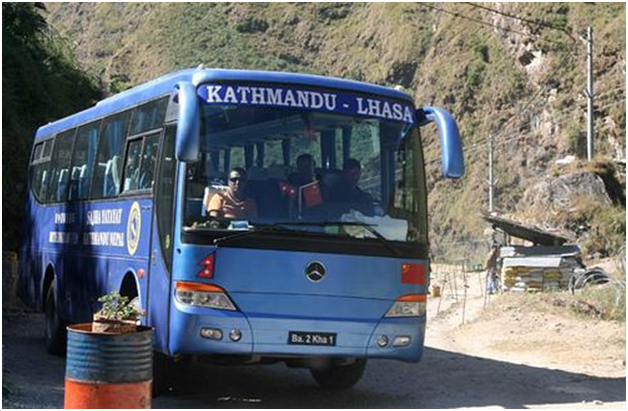Nepal Cancels PM Modi's Public Meetings, China 'Influence' Grows
The Lhasa to Kathmandu road link that has strategic implications for India

NEW DELHI: Nepal that had very reluctantly agreed to Indian pressure for three ill disguised public meetings to be addressed by Prime Minister Narendra Modi has finally withdrawn permission casting the first traces of a shadow over the Saarc summit in Kathmandu.
PM Modi was very keen to repeat a Madison Square garden in South Asia on the eve of the summit and aggressive diplomacy had resulted in ascertaining reluctant consent from the Nepal government for him to visit and address meetings at three shrines outside the capital--Lumbini, Muktinath and Janakpur. Maoists and other opposition groups had protested and while initially the Nepal government claimed that these were being hosted and organised locally, it finally let New Delhi know that it cannot continue with the agreed on program. Opposition parties had led the campaign against the decision, asking their government whether Nepal was a sovereign state or not.
India’s Ministry of External Affairs announced the cancellation just a few days before PM Modi was scheduled to travel to Nepal, treating it as a ‘postponement’ to be taken up by him later at a more convenient time for both countries.However, it remains to be seen how this plays out on the ground and to what extent the Prime Minister has taken it as an affront.
India is particularly concerned about the increasing role of China in Nepal. More so as Nepal is seriously looking at upgrading China from observer status to full Saarc membership. Beijing has been exerting pressure on the Saarc nations for this, and its growing relations with Sri Lanka, Pakistan, Nepal and even Bangladesh and Maldives clearly strengthening its position on this front.
China accelerated movement into Nepal during an interim period when India was caught up between supporting the exit-ing King or the Maoists who had emerged then as a major force. Since then it has taken up huge infrastructural initiatives, bringing its famous ‘road technology’ into Nepal. A major road connecting Lhasa to Nepal is underway, as is a high altitude railway link from Lhasa to Shigatse, the closest town to the Nepalese border and Tibets second largest city that is almost near completion.
Chinese goods have flooded Nepal markets. Chinese trade jumped from 11 per cent in 2009 to nearly 20 percent in 2010. A little Chinatown has come up with local Nepali shopkeepers fluent in Putonghua. Chinese tourists to Nepal have increased dramatically, being second only to India now. Nepal is looking increasingly towards China, more so as unlike India it is not seen as the ‘big brother’ interfering in the little Himalayan Kingdom’s internal affairs. It is more acceptable as an ally to the Nepal ruling and opposition parties, as apart from the one demand that Kathmandu not support the demand for an independent Tibet, Beijing has based the bilateral relationship on cooperation and trade.
NGO Saferworld maintains that China is keen to use Nepal as the transit country for South Asia. And it has observed that, "Chinese infrastructural developments in Nepal, combined with the build-up of its military capabilities in Tibet, will enable the [People's Liberation Army] to deploy rapidly to India's borders."
Indian experts fear the loss of strategic space to China that has gained more than a foothold in Nepal. A worry that it could be behind Nepal’s decision to cancel PM Modi’s public meetings is not stated, but whispered. The anti-India sentiment that resurfaces periodically in Nepal has been used by China to effectively gain support and a base in the country that it had hitherto rarely intervened in. The railway line mentioned earlier, plans for the development of Lumbini, construction of an airport are all plans that have caused serious concern in New Delhi.
Both India and China are competing for Nepals attention. PM Modi singled out Nepal for a first visit in South Asia and gave assistance of 1 billion dollars to counter China’s steady ongoing financial dole to Nepal for specific projects. It has also given monetary assistance to Nepal for the army and the police force.



